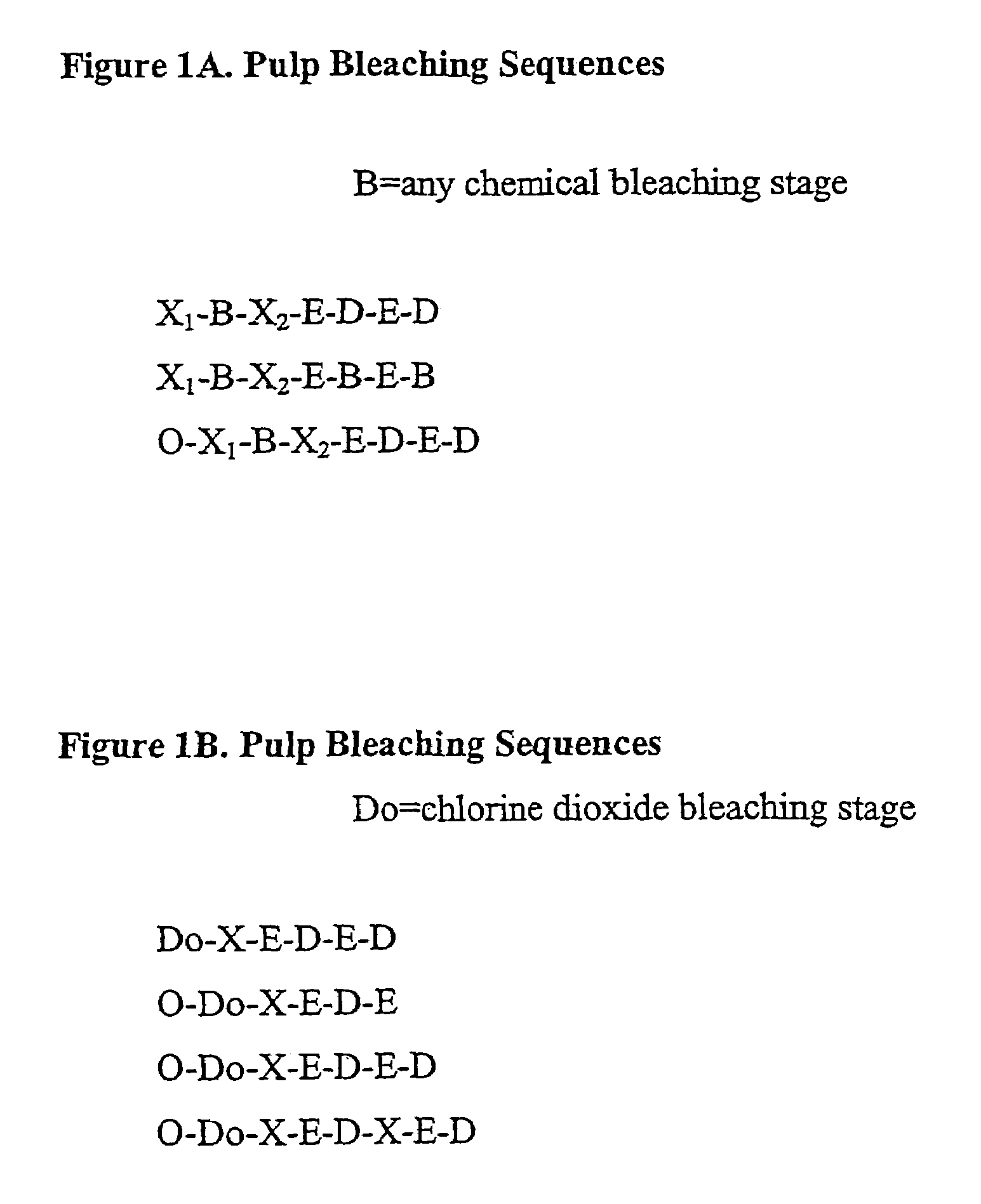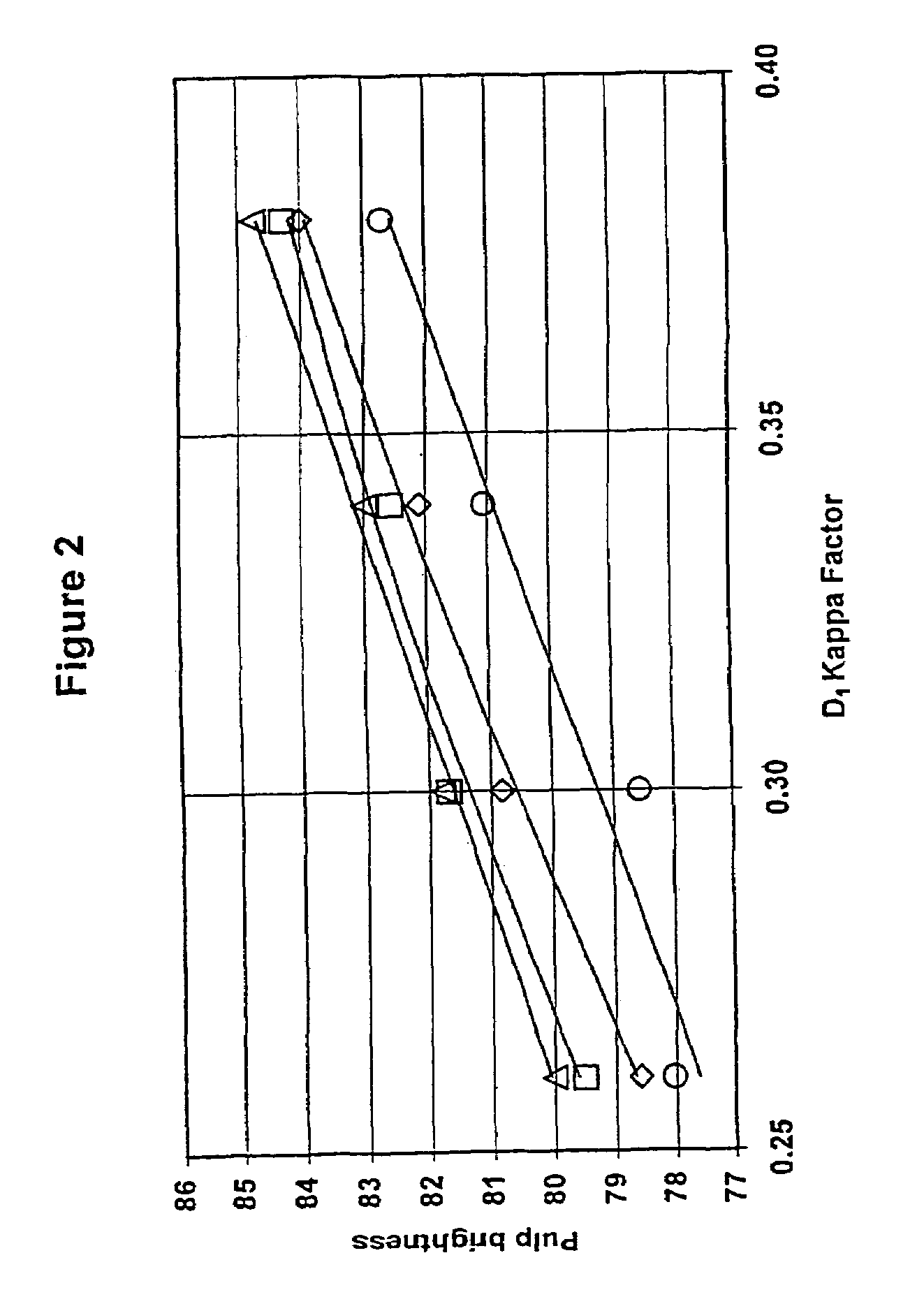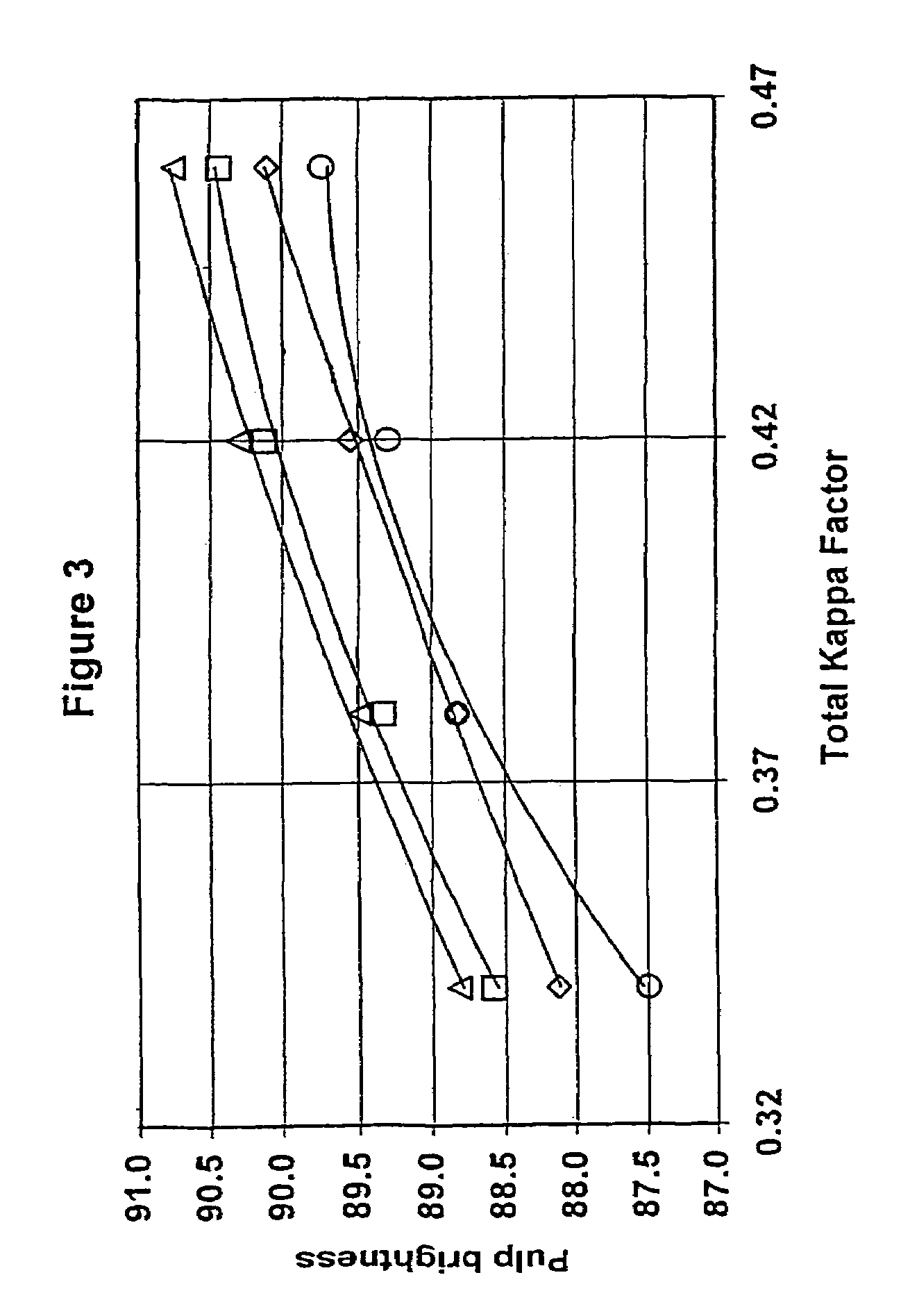Method of xylanase treatment in a chlorine dioxide bleaching sequence
a chlorine dioxide and xylanase technology, applied in the direction of cellulose treatment using microorganisms/enzymes, detergent compounding agents, papermaking, etc., can solve the problems of destroying some of the cellulose fibers in the pulp, harsh pulp, and inability to remove all the lignin without, so as to improve the bleaching effect and facilitate the integration of pulp bleaching processes
- Summary
- Abstract
- Description
- Claims
- Application Information
AI Technical Summary
Benefits of technology
Problems solved by technology
Method used
Image
Examples
example 1
Determination of Kappa Number
[0143]The kappa number of the pulp is determined using the protocol described in: TAPPI method for Kappa number of pulp (T 236 cm-85) from TAPPI Test Methods 1996-1997, which is herein incorporated by reference. Briefly, the kappa number is the volume (in milliliters) of a 0.1 N potassium permanganate solution consumed by one gram of moisture-free pulp under the conditions specified in the method. The results are corrected to 50% consumption of the permanganate added.
[0144]The kappa number determination is performed at a constant temperature of 25° C.±0.2° C. with continuous agitation. However, it is possible to correct for variations in temperature as is described below.
[0145]The moisture content of the pulp is determined in accordance with TAPPI T 210 “Sampling and Testing Wood Pulp Shipments for Moisture” which is herein incorporated by reference. Briefly, the pulp specimen is disintegrated in about 800 mL of distilled water and stirred. 100 mL of 0.1...
example 2
Standard Assay for the Measurement of Xylanase Activity
[0155]The endo xylanase assay is specific for endo-1,4-beta-D-xylanase activity. On incubation of azo-xylan (oat) with xylanase, the substrate is depolymerized to produce low-molecular weight dyed fragments which remain in solution on addition of ethanol to the reaction mixture. High molecular weight material is removed by centrifugation, and the colour of the supernatant is measured. Xylanase activity in the assay solution is determined by reference to a standard curve.
[0156]Substrate: The substrate is purified (to remove starch and beta-glucan). The polysaccharide is dyed with Remazolbrilliant Blue R to an extent of about one dye molecule per 30 sugar residues. The powdered substrate is dissolved in water and sodium acetate buffer and the pH is adjusted to 4.5.
[0157]Assay: Xylanase is diluted in 0.5M acetate buffer at pH 4.5. Two milliliters of the solution is heated at 40° C. for 5 minutes. 0.25 mL of pre-he...
example 3
Preparation of Chlorine Dioxide
[0160]Chlorine dioxide was made in the lab by the standard procedure of passing a mixture of chlorine gas and nitrogen through a series of columns containing sodium chlorite, and collecting the evolved gas in cold water. The chlorine dioxide was stored refrigerated at a concentration of 10.4 grams per liter in water. Further details regarding the preparation of chlorine dioxide may be found in Chlorine Dioxide Generation published by Paprican, Pointe Claire, Quebec (which is herein incorporated by reference).
PUM
| Property | Measurement | Unit |
|---|---|---|
| temperatures | aaaaa | aaaaa |
| temperature | aaaaa | aaaaa |
| temperature | aaaaa | aaaaa |
Abstract
Description
Claims
Application Information
 Login to View More
Login to View More - R&D
- Intellectual Property
- Life Sciences
- Materials
- Tech Scout
- Unparalleled Data Quality
- Higher Quality Content
- 60% Fewer Hallucinations
Browse by: Latest US Patents, China's latest patents, Technical Efficacy Thesaurus, Application Domain, Technology Topic, Popular Technical Reports.
© 2025 PatSnap. All rights reserved.Legal|Privacy policy|Modern Slavery Act Transparency Statement|Sitemap|About US| Contact US: help@patsnap.com



